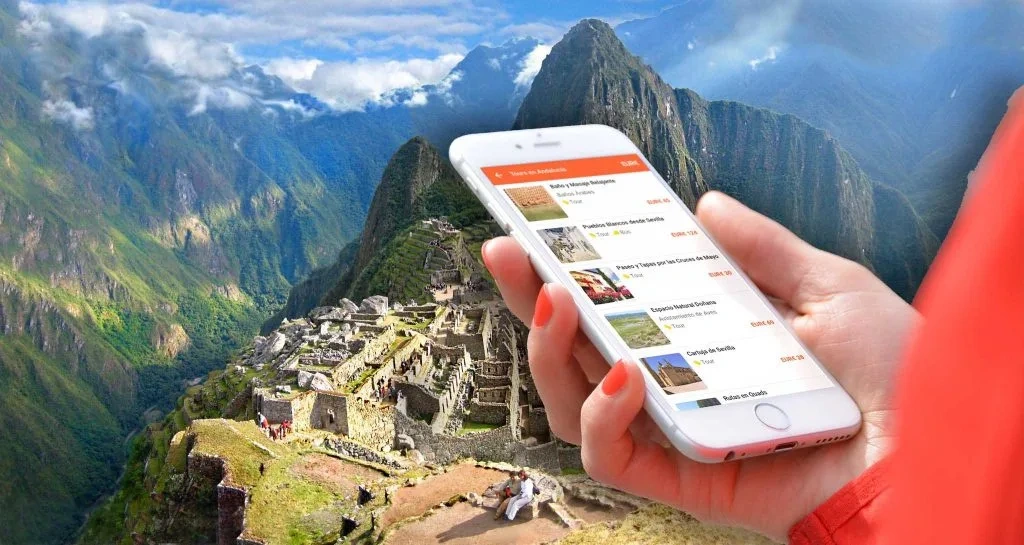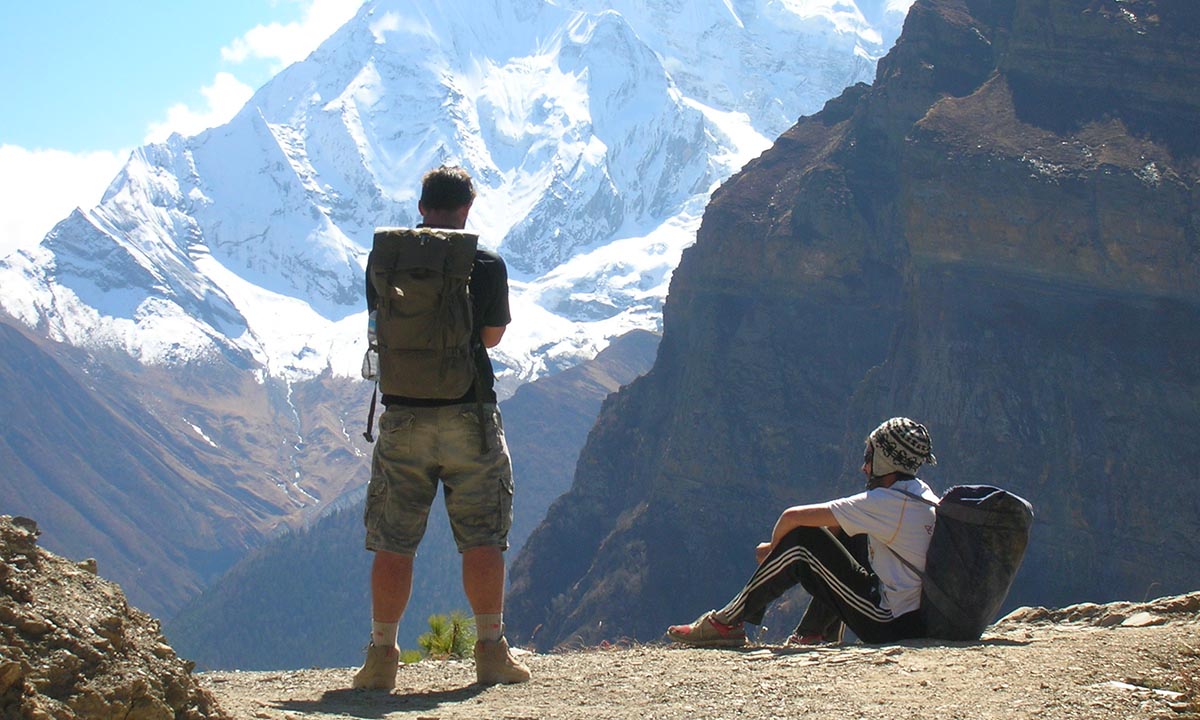The Best Apps for Backpackers: A Practical Travel Guide

Traveling light isn't just about packing less in your backpack—it’s also about making the most out of the tech you carry. For the modern backpacker, having the right apps can be the difference between a stressful trip and an epic adventure. Whether you’re booking a hostel in Cusco, hailing a ride in Lima, or meeting new friends on the road, today there are apps for nearly every travel need.
In this guide, you’ll find the best apps for backpackers—a global selection tested by young travelers, with real examples for navigating Peru and Latin America with ease. You'll also get real tips on how to use these apps in countries like Peru, and how to stay connected—including the fact that at Pariwana Hostels you can buy SIM and eSIM cards to always stay online.
1. Why Your Smartphone Is Your Ultimate Travel Tool
Being a backpacker today is more than just carrying a bag; it’s about embracing flexibility, improvising, and always being ready for the unexpected. The smartphone is the modern traveler's ultimate ally: it fits in your pocket, keeps you connected, guides you through unknown streets, and—when used well—can save you time, money, and a ton of hassle.
In Peru and across South America, staying connected is key for optimizing routes, catching deals, and keeping your info and contacts safe. That’s why mastering the right apps is just as important as packing smart.
2. Accommodation Booking Apps: Sleep Well, Spend Less
Nothing’s worse than arriving in a new city with no idea where you’ll sleep. These apps let you compare prices, read honest reviews, and book a bed at the best hostels with the best social vibe.
Hostelworld
Why use it: The go-to platform for backpackers worldwide, especially in Peru. Check real photos, honest reviews, compare prices, and book with no hidden surprises.
Pro tip: Top hostels in Lima and Cusco, like Pariwana Hostels Lima and Pariwana Hostels Cusco, are on Hostelworld, but you can also book directly on their official website.
Traveler tip: Download your booking confirmations to your phone for offline access.
Booking.com & Airbnb
Why use them: Solid alternatives for comparing all kinds of places, from private rooms to apartments. Booking.com has plenty of hostels; Airbnb is great for groups or if you want something different.
Peru note: In cities like Arequipa, Trujillo, or the Amazon, you might find more options on Booking or Airbnb than in hostel-focused apps.
Couchsurfing
For the adventurous: Connects you with locals offering free accommodation (and authentic advice). Lima and Cusco have active communities, though the app has changed its business model and some features post-pandemic.
3. Navigation & Offline Maps: Never Lose Your Way
Getting lost can be an adventure—unless you really didn’t mean to. These apps are lifesavers, even when you’re offline.
Google Maps
Essential: Lets you download maps offline. Before you travel (or from your hostel’s WiFi), download the maps for Lima, Cusco, Arequipa, or wherever you’re headed. That way, you can find your way even with no signal.
How to use offline: In the app, search for the city/region > tap “Download.”
Peru bonus: Not all colectivos or microbuses appear on Google Maps, but most major bus routes in big cities do.
Maps.me
Trekkers’ favorite: Offers ultra-detailed offline maps, including trekking trails and paths you won’t find on Google Maps. Essential for trips like Rainbow Mountain or hikes in the Sacred Valley.
Pro tip: Download country/region maps before heading to remote areas.
Rome2Rio
For planning routes: Shows how to get from point A to B by bus, train, flight, or taxi—with estimated prices and travel times.
4. Urban & Intercity Transportation Apps
Getting around Peru and South America takes some local know-how. These apps really work on the ground.
Uber
Available in Lima, Cusco, Arequipa: One of the safest and most convenient ways to get around, especially from the airport.
Safety tip: Avoid flagging down taxis at night or if you have a lot of luggage. Uber lets you share your trip with friends or family.
Alternatives: Beat and DiDi (especially popular in Lima) can be cheaper at rush hour.
Cabify
Operates in Lima and is known for modern cars and professional service.
Moovit
Ideal if you want to use public transport. Shows bus routes, stops, and transfers. Works well in Lima; less complete in Cusco, but great for big South American cities.
Busbud
For booking long-distance bus tickets online. Great for trips like Lima to Cusco, Arequipa, Huaraz, Puno, and more—no need to visit every terminal in person.
Airline Apps
Sky Airline, LATAM, Viva Air: Download your airline’s app for boarding passes, flight updates, and notifications about changes or delays.
Extra: Some low-cost airlines require check-in through the app and offer app-only deals.
5. Communication & Translation: The World in Your Language
Not every backpacker speaks Spanish, and not every Peruvian speaks English. These apps help you break down barriers anywhere.
Google Translate
Basic but powerful: Instantly translates phrases, menus, and signs—even using your camera.
Offline mode: Download Spanish, English, or Portuguese before your trip.
Real-life use: Super handy in markets, bus stations, or to understand signs at archaeological sites.
The main communication tool in Peru and most of Latin America. Most tours, hostels, and even restaurants confirm bookings or send info through WhatsApp.
Duolingo
If you want to learn basic Spanish or “get Peruvian” before your trip, this app makes learning essential phrases easy and even fun.
6. Staying Connected: SIM, eSIM, and Backpacker Tips
Traveling without data is almost an extreme sport these days. Staying online is essential not just for convenience, but for safety and social life.
How to get internet in Peru
Option 1: Physical SIM Card
At airports, shops, and hostels you can buy SIM cards from Claro, Movistar, Entel, or Bitel. Passport required; activation is instant. Prices range from 15 to 50 soles for several GB and local calls.
Option 2: eSIM
For compatible phones, you can buy an eSIM online and activate it as soon as you land—no need to swap out your main SIM.
Real tip for backpackers:
At Pariwana Hostels you can buy both physical SIM cards and eSIMs right at reception. No need to hunt for stores, wait in lines, or struggle with language barriers—just start using your data from day one.
Other options:
Holafly, Airalo: International eSIM providers, great if you want data even before you land in South America.
Free WiFi: Most hostels, cafés, and restaurants in Lima and Cusco offer decent WiFi, but it’s not always reliable or safe for banking.
7. Organizing & Managing Your Itinerary
Keeping everything in order means fewer surprises and more time to enjoy each destination.
TripIt
Automatically organizes all your bookings (flights, hostels, buses) into a single itinerary. Just forward your confirmation emails and the app builds your trip plan.
Google Calendar
Perfect for scheduling check-in/check-out dates, tours, or activities. Set reminders and share with your travel buddies.
PackPoint
Helps you pack without forgetting anything. Creates custom lists based on your destination, weather, and trip length.
Extra: Share your list with fellow travelers.
8. Safety, Health & Emergency Apps
Prevention is key, especially in big cities or remote destinations.
SOS / 911
Peru’s emergency number is 911. Not an app, but have it saved in your phone.
Sitata & Smart Traveler
Apps that alert you to safety concerns, protests, health risks, or travel updates for your destinations worldwide.
TravelSafe
Database of emergency numbers by country, including hospitals and tourist police.
Google Drive/Dropbox
Keep digital copies of your passport, insurance, and bookings in the cloud. Access them even if your phone gets lost or stolen.
9. Money: Managing Your Finances on the Road
Traveling on a tight budget is a backpacker’s norm. These apps keep your spending in check.
Revolut, Wise, N26
Digital banks that let you withdraw cash and pay in soles or dollars with low fees. Create virtual cards for extra security.
XE Currency
Converts soles, dollars, euros, and more in real time. Great for haggling at markets or tracking your spending.
Splitwise
For splitting bills with friends or hostel roommates. No more confusing math or awkward conversations.
10. Food, Culture & Local Life
Experiencing local food and culture is a must for any traveler.
TripAdvisor & Google Reviews
Find the best restaurants and experiences based on real reviews. Handy for discovering where to eat ceviche in Lima or find the best coffee in old Cusco.
Rappi & Uber Eats
Delivery apps for those rainy or lazy days. Rappi is popular in Lima (less so in Cusco); Uber Eats is gaining traction in big cities.
Eventbrite & Meetup
Search for events, concerts, and traveler meetups wherever you are. Great for joining the local scene.
Festival & Fair Locators
There are specific apps and local websites for finding cultural festivals in South America. Always ask at your hostel about the latest events.
11. Socializing & Travel Community
Traveling solo doesn’t mean being alone. These apps help you meet other young people from around the globe.
Tinder & Bumble
Beyond dating—many travelers use these apps to make friends, find hiking buddies, or create hostel outing groups.
Facebook Groups
Look for groups like “Backpackers in Peru” or “Backpackers Lima/Cusco.” Share tips, safety alerts, or even volunteer opportunities.
Travel Buddies
Specialized apps for finding travel partners by destination, date, or style.
12. Bonus Apps: Volunteering & Sustainability
Modern backpackers often seek authentic experiences, volunteering, or ways to minimize their environmental impact.
Worldpackers & Workaway
Platforms to find volunteer opportunities in hostels, NGOs, farms, and community projects. Trade a few hours of work for free accommodation and sometimes meals. Many hostels in Peru (including Pariwana) are open to work-exchange.
HappyCow
If you’re vegetarian/vegan, this app helps you find food options everywhere—even in remote towns.
Ecosia
A browser that donates part of its revenue to reforestation. Use it instead of Google and help the planet as you travel.
13. Final Tips & Useful Resources
Download your apps and maps before reaching areas with weak signal.
Always carry a power bank and universal adapter.
Keep your hostel’s address and number handy (Pariwana Lima here, Pariwana Cusco here).
Check out the Pariwana Hostels Blog for local tips and updates on events in Lima and Cusco.
For official tourism info, visit Peru.travel and PromPeru.
Always read recent reviews and follow safety advice from your hostel and travel apps.
Closing
Having the right apps on your phone is like carrying a digital Swiss Army knife in your backpack: they help you move, meet people, solve problems, and make the most of every moment on the road. In Peru and worldwide, the best memories happen offscreen—but with a little tech in your pocket, you can travel with more freedom and less stress.
May your next destination always be just a click and an app away!
✍️ Pariwana Editorial Team
Practical travel tips written by backpackers, for backpackers.

Practical tips to enjoy Latin America without breaking your budget.


